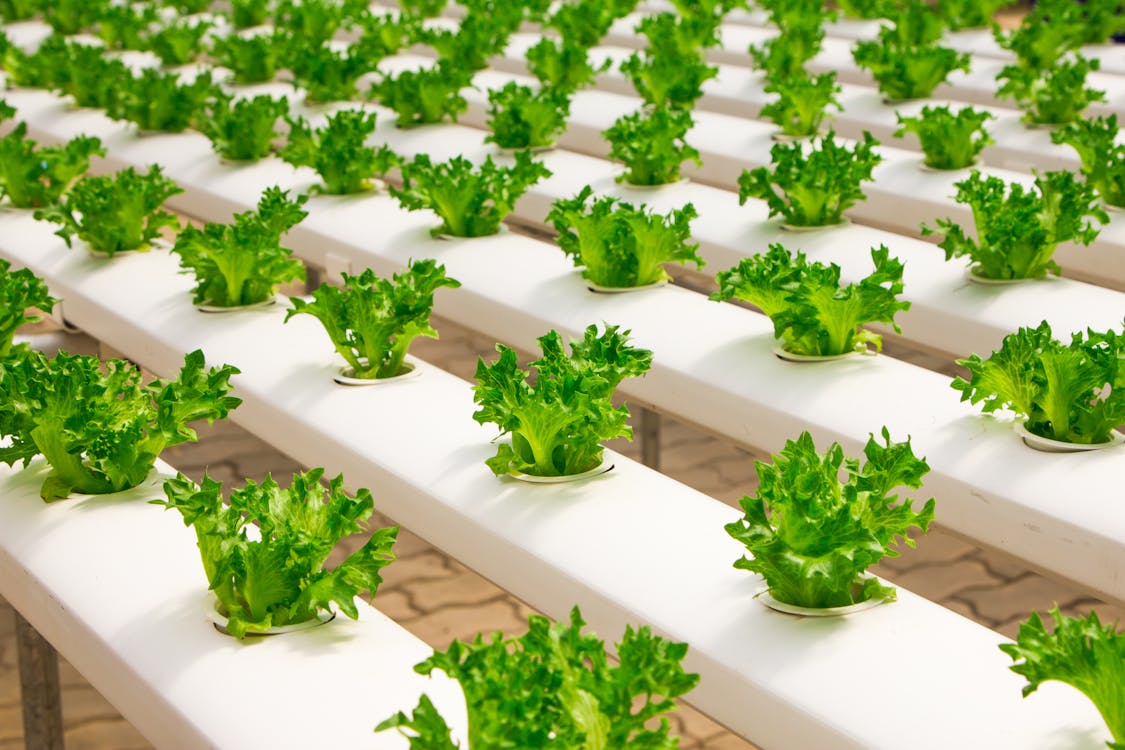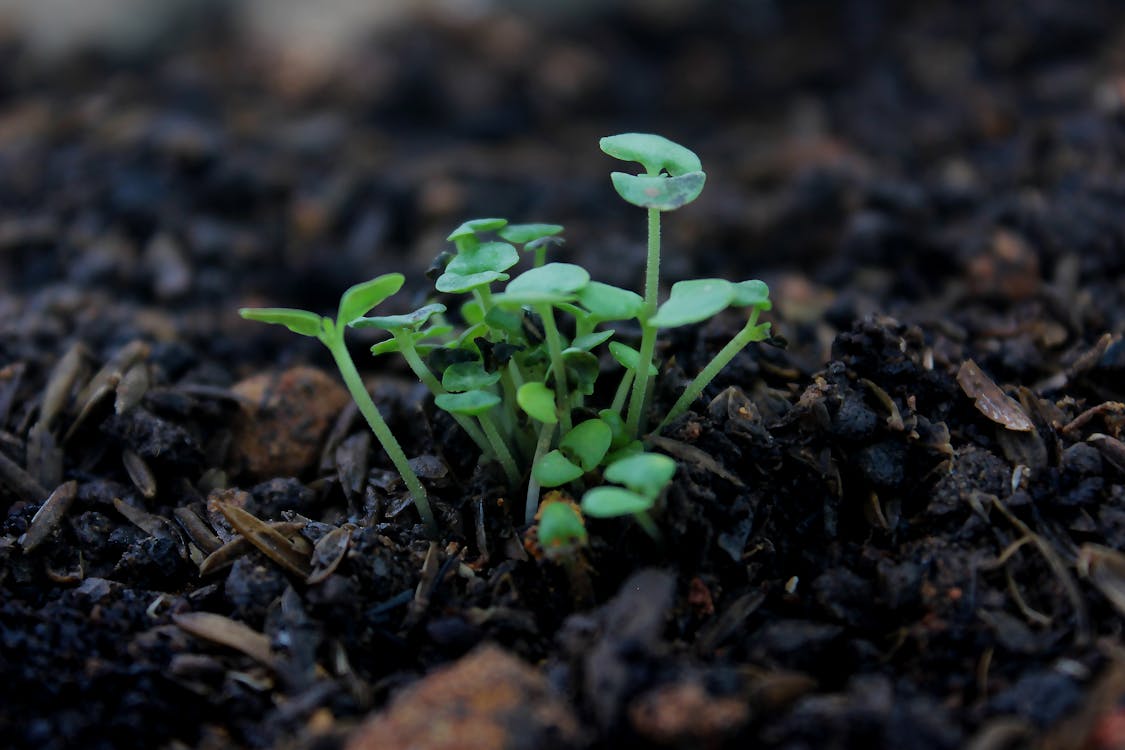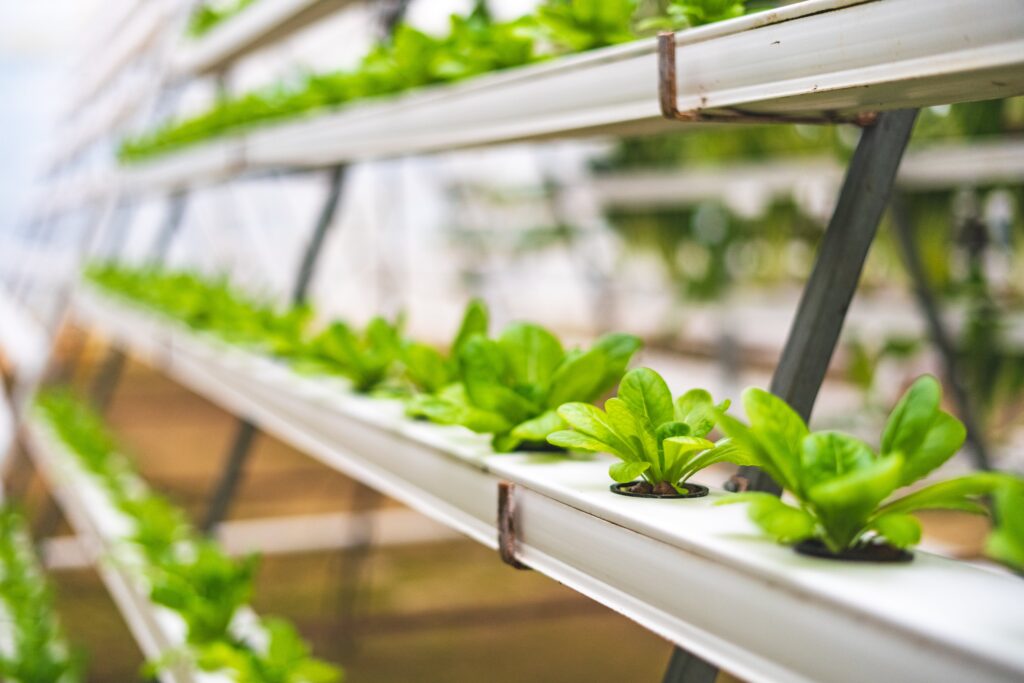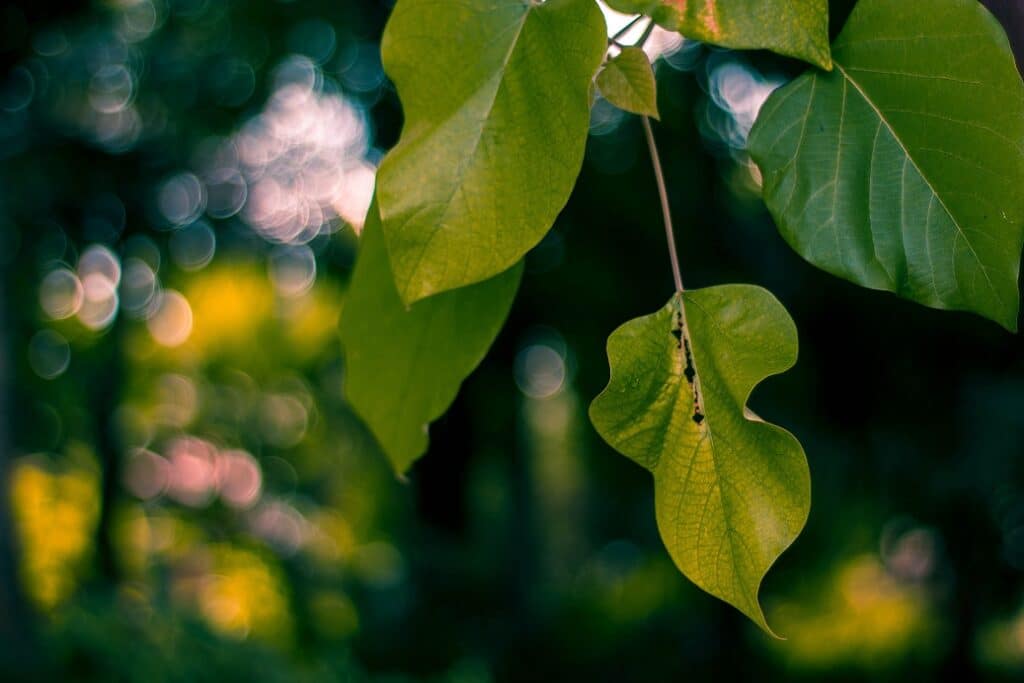With the right knowledge and care, you can create a thriving soil-less garden of lush plants. I’ll guide you through successfully growing hydroponic indoor plants in this article. Highlighting key techniques and tips for their unique water-based environment. Whether you’re an expert or beginner, you’ll be equipped to create a stunning indoor garden.
Choosing the Right Plants
Understanding Plant Requirements
When it comes to growing hydroponic indoor plants, it is crucial to understand their specific requirements deeply. Different plants have different needs in terms of lighting, water, nutrients, and space. Some plants may thrive with minimal sunlight, while others require intense light exposure. Similarly, some plants may need a higher nutrient concentration, while others require a more diluted solution. Tailor your plant care by grasping the unique needs of your plants, ensuring they thrive in the best possible conditions for growth.
Researching Suitable Plant Varieties
Once acquainted with the hydroponic indoor plant basics, choosing plant varieties meticulously is essential. Options span from swift-growing leafy greens like lettuce to aromatic herbs such as basil. Even flowering plants like tomatoes and strawberries flourish hydroponically. When making selections, deliberate on growth pace, nutrient needs, space constraints, and personal preference. This thoughtful approach ensures the cultivation of plants ideally suited for hydroponic systems, aligning with your cultivation objectives.
Considering Space and Lighting Constraints
When establishing an indoor hydroponic garden, assessing your space and lighting limitations is crucial. Evaluate your home or chosen growing area, accounting for vertical and floor space and access to natural light. If natural light is scarce, artificial grow lights become essential to meet your plants’ light intensity needs. By addressing these constraints, you can strategically plan your hydroponic system layout, ensuring optimal conditions for plant growth.
Setting Up the Hydroponic System

Determining the System Type
Prior to establishing your hydroponic system, assess the optimal type based on factors like space, budget, and expertise. Common systems, such as deep water culture, nutrient film technique, and ebb and flow, have distinct pros and cons. Thoroughly research to make an informed choice aligned with your needs.
Selecting the Appropriate Growing Medium
The choice of growing medium is crucial for the success of your hydroponic system. The growing medium serves as a support structure and stabilizes the plants’ roots. Some common growing mediums for hydroponics include rockwool, coconut coir, perlite, and clay pellets. Each medium has its advantages and disadvantages, such as water retention, aeration, and pH stability. When choosing a growing medium for your plants, factor in water capacity, drainage, and pH buffering to match their needs accurately.
Installing the System Components
After deciding on the hydroponic system and choosing a fitting growing medium, proceed to install system components. This includes configuring the reservoir, connecting the water pump and tubing, setting up growing containers, and ensuring adequate ventilation. Follow meticulous installation steps provided by the manufacturer.
Providing Adequate Lighting

Understanding Light Requirements
Light is a vital element for the growth and development of hydroponic indoor plants. Different plants have specific light requirements, including light intensity, duration, and spectrum. Some plants thrive in full sunlight, while others prefer partial shade. To ensure optimal growth, grasp the light needs of your selected plants. Providing the right quantity and quality is crucial; insufficient light yields weak plants, and excess causes scorched leaves or stunted growth.
Choosing the Right Grow Lights
In indoor hydroponic systems with limited natural light, grow lights are critical in providing the necessary light energy for plant photosynthesis. Consider factors such as light intensity, spectrum, energy efficiency, and cost when selecting grow lights. Common types of grow lights used in hydroponic gardening include fluorescent lights, high-intensity discharge (HID) lights, and light-emitting diodes (LEDs). Each type of grow light has its benefits and considerations, so choosing the one that best suits your specific plant requirements and resource constraints is important.
Setting Up the Lighting System
After selecting the appropriate grow lights, the next step is to set up the lighting system in your hydroponic indoor garden. Position the lights at the optimal distance from the plants to ensure proper light penetration and coverage. Use reflective surfaces or light fixtures to maximize the distribution and efficiency of the light. Consider using a timer to automate the lighting schedule and maintain consistent plant exposure. Regularly monitor the light levels and adjust the positioning or intensity of the lights if necessary to ensure your plants receive the ideal amount of light for healthy growth.
Managing Nutrient Solution

Understanding Nutrient Requirements
In hydroponic gardening, plants receive their nutrients directly from the nutrient solution rather than the soil. Understanding the nutrient requirements of your chosen plant varieties is crucial for providing the appropriate balance of essential elements. Nitrogen, phosphorus, and potassium are the primary macronutrients needed for plant growth, while secondary macronutrients and micronutrients are also necessary in smaller quantities. Research the specific nutrient requirements of your plants and ensure that your nutrient solution provides the necessary elements in the correct ratios to support healthy growth.
Mixing the Nutrient Solution
To maintain a healthy and thriving hydroponic indoor garden, you need to mix a nutrient solution that meets the needs of your plants. A typical nutrient solution comprises water and concentrated solutions mixed in specified ratios. Use high-quality water with a balanced pH as the base for your nutrient solution. Follow the manufacturer’s instructions or consult a nutrient calculator to determine the correct nutrient concentrations for each growth stage of your plants. Regularly test the nutrient solution’s pH and adjust it if necessary to ensure optimal nutrient uptake.
Monitoring and Adjusting Nutrient Levels
Once you have mixed the nutrient solution, monitoring and adjusting its levels regularly is essential. Testing the nutrient solution’s electrical conductivity (EC) and pH will provide valuable information about its nutrient concentration and acidity or alkalinity. Use a reliable EC meter and pH testing kit to measure these parameters. If the nutrient levels are too high, you may need to dilute the solution with water. Conversely, you can add concentrated nutrient solutions if the levels are too low. Regularly monitor and adjust the nutrient levels to ensure your plants receive the ideal nutrient concentration for healthy growth.

Understanding pH Requirements
pH refers to the acidity or alkalinity of the nutrient solution in hydroponic systems. Different plants have different pH requirements for optimal nutrient uptake. Maintaining the proper pH levels is crucial as it affects the availability and absorption of essential nutrients. Most hydroponic plants prefer a slightly acidic to neutral pH range of 5.5 to 6.5. Deviations from this range can lead to nutrient deficiencies or toxicities. Understanding the pH requirements of your chosen plants will enable you to adjust and maintain the pH levels within the appropriate range for healthy growth.
Testing the pH Levels
Regularly testing the pH levels of your nutrient solution is essential for maintaining optimal plant health and preventing nutrient imbalances. Use a pH testing kit or a pH meter specifically designed for hydroponics to measure the solution’s pH accurately. Take multiple readings from different parts of the reservoir to ensure accuracy. It is recommended to test the pH levels daily or every other day, as fluctuations can occur due to evaporation, nutrient uptake, or pH drift. Record and track the pH readings to identify any trends or deviations requiring adjustment.
Adjusting pH Levels if Necessary
If the pH levels of your nutrient solution deviate from the desired range, you will need to adjust them to maintain optimal plant health. You can add a pH-up solution or a small amount of baking soda to the nutrient solution to increase pH. On the other hand, to decrease pH, you can add a pH-down solution or a small amount of citric acid. Adjust gradually and follow the manufacturer’s instructions to avoid drastic fluctuations in pH levels. Regularly monitor the pH after adjustments to ensure stability and provide the plants with a consistent pH environment.
Understanding Temperature Requirements
Temperature plays a crucial role in the growth and development of hydroponic indoor plants. Each plant variety has specific temperature requirements for optimal growth. Some plants thrive in cooler temperatures, while others prefer warmer conditions. It is important to understand the temperature preferences of your chosen plants to provide the ideal environment for them. Maintaining the correct temperature will promote healthy growth, optimize nutrient absorption, and prevent the development of pests and diseases that thrive in extreme temperatures.
Controlling Temperature and Humidity
Implementing proper controls to maintain the desired temperature and humidity levels in your hydroponic indoor garden is important. Temperature can be controlled using various methods such as adjusting the room’s thermostat, using cooling or heating equipment, or positioning fans for air circulation. Humidity can be managed through the use of humidifiers or dehumidifiers, as well as by venting excess humidity from the growing area. Monitoring the temperature and humidity levels regularly and making adjustments as necessary will ensure that your plants have an optimal growing environment.
Preventing Common Issues Related to Temperature and Humidity
Maintaining the appropriate temperature and humidity levels in your hydroponic indoor garden will help prevent common issues that arise from extreme conditions. High temperatures can lead to heat stress, wilting, or even plant death, while low temperatures can slow down plant growth and make them more susceptible to diseases. Additionally, high humidity levels can encourage the growth of mold and fungus, while low humidity can cause plants to dry out. Providing the correct temperature and humidity conditions can prevent these problems and create a favorable environment for healthy plant growth.

Understanding Watering Needs
Water is essential for the growth and development of hydroponic indoor plants. Unlike soil-based gardening, where plants extract water from the surrounding soil, hydroponic plants rely on the nutrient solution for their water supply. Understanding your plants’ watering needs is important to prevent over or under-watering. Factors such as plant size, growth stage, and temperature affect the rate at which plants consume water. Monitoring the moisture levels in the growing medium and observing the plants’ overall health can help determine when and how much water to provide.
Establishing a Feeding Schedule
Setting up a feeding schedule is crucial for maintaining the health and vitality of your hydroponic indoor plants. Feeding schedules will vary depending on the specific nutrient requirements of your chosen plant varieties. Some plants may require nutrient-rich solutions throughout their growth stages, while others may require different nutrient concentrations at different times. Research the nutrient needs of your plants and establish a feeding schedule that includes regular nutrient solution changes, ensuring that your plants receive the necessary nutrients as they progress through their growth cycles.
Preventing Water-related Problems
Proper water management is important to prevent water-related problems in hydroponic indoor gardens. Over-watering can lead to root rot, oxygen deprivation, and nutrient imbalances, while under-watering can cause nutrient deficiencies and stunted growth. To prevent these issues, ensure that your growing medium has proper drainage to avoid water stagnation. Monitor the moisture levels regularly and adjust watering accordingly to prevent waterlogged or dry conditions. Maintaining a clean and well-aerated nutrient solution will reduce the risk of diseases and provide an optimal growing environment for your plants.
Understanding Pruning Techniques
Pruning is essential in hydroponic indoor gardening to promote healthy growth, increase yields, and maintain plant shape and size. Pruning involves removing unwanted or excess plant material, such as dead leaves, damaged branches, or overcrowded areas. It helps improve air circulation, reduce the risk of pests and diseases, and redirect the plant’s energy towards productive growth. Learn and apply appropriate pruning techniques for your specific plant varieties to ensure that you maximize their growth potential and achieve the desired shape and form.
Training Plants for Optimal Growth
Training plants in a hydroponic indoor garden involves manipulating their growth patterns to optimize light exposure, airflow, and overall plant structure. Techniques such as trellising, staking, or using plant clips can help support the plants and guide their growth in specific directions. By training your plants, you can prevent them from becoming overcrowded, ensure even light distribution, and improve nutrient and water uptake. Research and apply suitable training methods based on the growth habits of your chosen plant varieties to promote optimal growth and enhance your plants’ overall health and productivity.
Maintaining Plant Shape and Size
Maintaining the shape and size of your hydroponic indoor plants is essential for an organized and aesthetically pleasing garden. Regular pruning and training, as well as monitoring plant growth, can help you achieve this goal. Trim excess growth, guide the plants’ development, and maintain a balanced canopy to ensure each plant receives adequate light and nutrients. Regularly inspect your plants, check for any irregular growth patterns or signs of stress, and make necessary adjustments to maintain their overall shape and size. You can achieve a visually appealing hydroponic garden by actively managing your plants’ growth.
Identifying Common Pests and Diseases
Pests and diseases can pose significant threats to the health and productivity of hydroponic indoor plants. Common pests include aphids, spider mites, and whiteflies, while diseases can range from fungal infections to viral or bacterial infestations. Learn to identify the signs and symptoms of common pests and diseases that affect your chosen plant varieties. Regularly inspect your plants for any signs of infestation or infection to enable early detection and intervention.
Implementing Preventive Measures
Prevention is key when it comes to managing pests and diseases in a hydroponic indoor garden. Implementing preventive measures can greatly reduce the risk of infestations and infections. Maintain proper plant hygiene by regularly cleaning and disinfecting your hydroponic system and equipment. Keep the growing area clean, removing any debris or fallen plant material that can harbour pests or pathogens. Monitor the garden regularly for any signs of pests or diseases and take immediate action when necessary. Additionally, consider implementing biological controls or introducing beneficial insects as part of an integrated pest management (IPM) strategy.
Treating Infestations and Infections
Despite the best preventative efforts, infestations or infections may still occur in your hydroponic indoor garden. Swift and appropriate action is crucial to prevent the spread of pests or diseases and minimize plant damage. Depending on the severity, treatment methods may include applying organic insecticides or fungicides, pruning affected plant parts, or removing heavily infested or infected plants from the garden. Research safe and effective treatment options for your specific pests and diseases, and follow the instructions carefully to protect your plants’ health and minimize chemical interventions.
Identifying and Resolving Nutrient Deficiencies
Nutrient deficiencies can occur in hydroponic indoor plants if the nutrient solution does not balance essential elements adequately. Common signs of nutrient deficiencies include yellowing or browning leaves, stunted growth, or unusual discoloration. By regularly monitoring the color and overall health of your plants, you can identify nutrient deficiencies early on. Address deficiencies by adjusting the nutrient solution’s concentration or pH, or by adding specific nutrient supplements to correct the imbalances. Regularly monitor the plants’ response to these adjustments and make further modifications if necessary to ensure optimal nutrient uptake.
Addressing Light-related Problems
Issues related to lighting can impact the growth and health of hydroponic indoor plants. Insufficient light can cause leggy, elongated growth, while excessive light can lead to leaf burn or stunted growth. Observe your plants closely and look for signs such as stunted growth, pale leaves, or stretching towards the light source. Adjust the positioning or intensity of your grow lights to ensure adequate light exposure for optimal growth. In addition, regularly clean light fixtures and reflectors to maximize light distribution and efficiency. By addressing light-related problems promptly, you can ensure that your plants receive the optimal amount and quality of light.
Dealing with pH Imbalances
pH imbalances can significantly impact nutrient availability and absorption in a hydroponic indoor garden. If the pH levels of your nutrient solution deviate from the desired range, it can lead to nutrient deficiencies or toxicities. Monitor the pH regularly and adjust it using pH-up or pH-down solutions if necessary. However, if you consistently experience pH imbalances despite adjustments, it may indicate a larger underlying issue, such as poor water quality or microbial activity. Consider testing your water source or reviewing your nutrient solution and system management to identify and resolve the cause of the recurring pH imbalances.
In summary, cultivating thriving hydroponic indoor plants demands meticulous attention to plant needs, precise hydroponic system setup, ensuring ample light, nutrient solution care, pH regulation, temperature/humidity monitoring, precise watering/feed, adept pruning/training, pest/disease prevention, and adept troubleshooting. These comprehensive steps, tailored to your plant varieties, establish an optimal environment for flourishing hydroponics.




